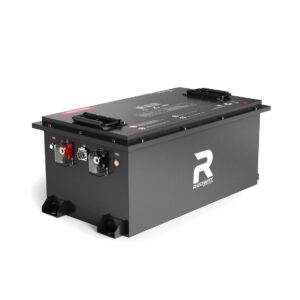How Can You Optimize Off-Grid RV Power for Extended Trips?
Embarking on extended off-grid RV adventures requires meticulous power management to ensure comfort and functionality. Modern travelers increasingly rely on renewable energy solutions combined with smart storage and monitoring systems to achieve energy independence. This guide explores key strategies and components for optimizing your RV’s power system, enabling you to explore remote locations without sacrificing essential amenities.
What Are the Core Components of Off-Grid RV Power Systems?
Off-grid RV power systems rely on solar panels, lithium batteries, inverters, and charge controllers. Solar panels harvest energy, stored in lithium batteries for durability and efficiency. Inverters convert DC to AC power, while charge controllers regulate energy flow. These components work synergistically to ensure uninterrupted power during extended trips, minimizing reliance on external grids.

How Do Solar Panels Enhance Off-Grid RV Power Efficiency?
Solar panels maximize energy independence by converting sunlight into electricity. Monocrystalline panels offer higher efficiency (18-22%) in limited roof space, while portable panels provide flexibility. Pairing panels with MPPT charge controllers optimizes energy harvest, even in low-light conditions. Proper tilt and cleaning ensure peak performance, critical for powering appliances during off-grid adventures.
Angle optimization is crucial for solar efficiency. Adjusting panels seasonally—steeper angles in winter, flatter in summer—increases energy capture by up to 25%. Portable solar blankets can supplement fixed arrays, adding 200-400W capacity during peak usage. Maintenance involves quarterly inspections for micro-cracks and monthly cleaning with distilled water to prevent mineral buildup. New bifacial panels capturing reflected light boost output by 11-15% in snowy or sandy environments.
| Panel Type | Efficiency | Space Needed |
|---|---|---|
| Monocrystalline | 18-22% | 15 sq.ft/kW |
| Polycrystalline | 15-17% | 20 sq.ft/kW |
Why Are Lithium Batteries Superior for Off-Grid RV Energy Storage?
Lithium batteries outperform lead-acid variants with higher energy density, faster charging, and longer lifespan (3,000-5,000 cycles). They maintain consistent voltage under heavy loads and operate efficiently in extreme temperatures. Though costlier upfront, their durability and minimal maintenance reduce long-term expenses, making them ideal for extended off-grid stays.
Lithium iron phosphate (LiFePO4) batteries dominate RV applications due to thermal stability and 80% depth of discharge capability versus 50% for AGM batteries. A 100Ah lithium battery provides 1280Wh usable energy compared to 600Wh from lead-acid equivalents. Built-in battery management systems (BMS) prevent overcharging and balance cells automatically. For cold climates, self-heating models maintain charging capability down to -4°F (-20°C).
| Feature | Lithium | Lead-Acid |
|---|---|---|
| Cycle Life | 3,000+ | 500 |
| Weight | 31 lbs | 63 lbs |
How to Size an Inverter for Optimal RV Power Management?
Inverter sizing depends on total wattage of AC appliances. Calculate peak load (e.g., microwave + fridge = 2,000W) and choose a 3,000W pure sine wave inverter for headroom. Oversizing prevents overloads, while surge capacity handles motor startups. Pair with battery banks sized to sustain loads during non-sunlight hours for seamless energy flow.
What Advanced Energy Monitoring Tools Improve RV Power Efficiency?
Smart monitors like Victron BMV-712 or Renogy Rover track real-time consumption, battery levels, and solar input. Bluetooth-enabled apps provide granular data, identifying energy drains. Integrating IoT sensors automates load shedding for low-battery scenarios. These tools empower users to optimize usage patterns, extending off-grid autonomy by 20-30%.
How Does Weatherproofing Enhance Off-Grid RV Power Reliability?
Weatherproof battery enclosures and corrosion-resistant connectors prevent moisture damage. Solar panel tilt mounts shed snow/rain, while UV-resistant wiring avoids degradation. Insulating batteries maintains performance in sub-zero temperatures. Such measures ensure uninterrupted power during storms, humidity, or temperature extremes, critical for remote locations.
Can Modular Power Systems Future-Proof Your RV Energy Setup?
Modular systems allow incremental upgrades without full overhauls. Expandable battery racks, daisy-chainable solar controllers, and plug-and-play inverters accommodate added panels or storage. This scalability adapts to evolving tech like solid-state batteries or bifacial solar, ensuring your RV stays current with renewable energy advancements.
What Legal Compliance Factors Affect Off-Grid RV Power Installations?
Local codes may restrict generator hours, solar panel sizes, or lithium battery certifications. NFPA 1192 standards govern RV electrical safety, requiring UL-listed components. National parks often mandate quiet hours (generators off after 8 PM). Compliance avoids fines and ensures insurance validity during cross-state travels.
“Redway’s lead engineer notes: ‘Modern off-grid RVs demand hybrid architectures—solar paired with fuel cells or compact wind turbines. Our clients achieve 14+ days of autonomy using AI-driven load balancers that prioritize essential systems. Future systems will integrate vehicle-to-grid (V2G) tech, letting RVs supply power back to homes during outages.'”
Conclusion
Optimizing off-grid RV power requires strategic component selection, smart monitoring, and scalable design. By leveraging lithium tech, precision inverters, and weather-resistant setups, travelers achieve energy resilience. Staying compliant and adopting modularity ensures adaptability, transforming RVs into self-sufficient habitats for limitless exploration.
FAQ
- Q: How long can an RV run off-grid with solar power?
- A: With 600W solar and 300Ah lithium batteries, most RVs sustain 3-5 days without sun, depending on appliance usage.
- Q: Are generators still necessary with solar panels?
- A: Generators act as backups during prolonged cloudy periods, ensuring continuous power for high-draw devices like air conditioners.
- Q: What’s the ROI timeline for solar RV installations?
- A: Systems typically pay for themselves in 2-4 years via saved campground fees and reduced generator fuel costs.
